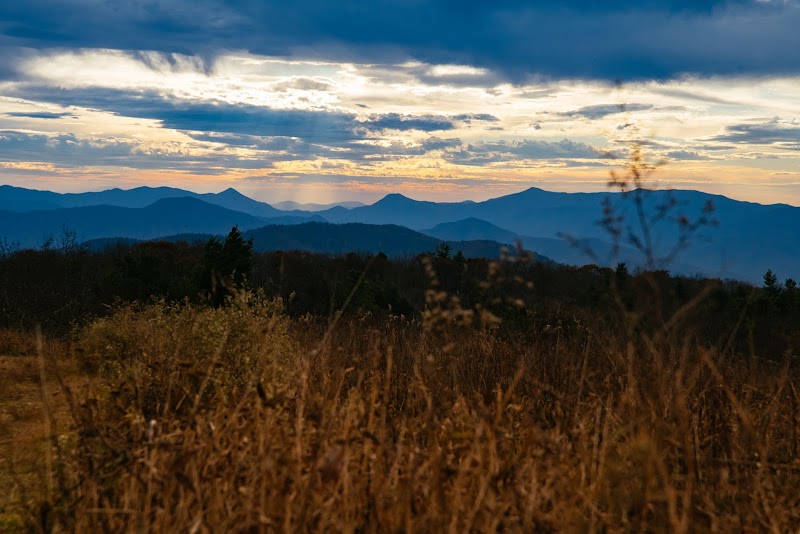River Trails and Secret Swimming Holes: Cherokee National Forest Adventures
Cherokee National Forest’s river hikes deliver invigorating adventure with refreshingly quiet swimming holes tucked beneath forest canopies. Discover clear waters and rugged trails where forest and river engage in a lively dance, perfect for those looking to combine scenic exertion with cooling respite.
Wear Grip-Tough Footwear
Riverside trails include wet rocks and uneven dirt paths, so hiking boots or trail shoes with solid traction are essential to avoid slips.
Hydrate Before and During Hikes
Water sources may be available but require treatment; carry enough clean water especially during summer when temperatures climb.
Time Your Swim Smartly
Swim in secluded river pools when water flow is slow and beware of rapidly changing currents after heavy rain or seasonal shifts.
Start Early or Late
Visit during early mornings or late afternoons to avoid peak heat and enjoy softer natural light, enhancing both the experience and photography options.
River Trails and Secret Swimming Holes: Cherokee National Forest Adventures
Cherokee National Forest challenges and invites you with its flowing rivers that carve out some of the most compelling scenic hikes in the Southeast. These waterways don’t just meander; they dare you forward, their currents sculpting trails rich with rugged charm and quiet swimming spots hidden beneath leafy canopies.
Start at the Bald River Falls trail, a 2.3-mile round trip with a moderate 400-foot elevation gain. The path hugs the Bald River, its sound growing louder with every step until you reach the plunging waterfall. The spray cools the air, and just downstream, quiet pools peer out through mossy boulders—ideal for a careful dip on warm days. The trail’s packed dirt and occasional rocky sections require sturdy footwear, but the reward is a blend of forest shade and river energy that moves with purpose.
For a longer trek, the Watauga River Trail stretches about 6 miles with moderate ups and downs across uneven terrain. The trail runs alongside a river that insists on its presence, urging you past smooth-swimming holes where the water holds steady beneath overhanging branches. These spots offer refreshing relief and a chance to rest muscles aching from steady elevation shifts.
If you seek seclusion, Walker Branch stands out. This 4.5-mile loop presents rocky paths with some steep sections climbing roughly 600 feet. The branch itself whispers secrets from shaded pools, untouched by heavy foot traffic. These swimming holes are tucked away, rewarding hikers willing to handle the hike’s physical demands.
Timing your visit between May and September gives you warmer water and longer daylight, essential for safe exploration and cooling off. Mornings offer quieter trails and softer light, while late afternoons bring golden hues emphasizing the interplay of leaf and water.
Hydration is crucial—pulled from the wilderness or carried in—you’ll be courting rivers that challenge your pace and test your endurance. Prepare for slick, uneven ground with shoes that water can’t defeat.
Cherokee’s rivers don’t bow to spectators; they offer an active relationship. You do more than walk beside them. You engage their flow, their carved banks, and their inviting pools, forming a rugged friendship of muscle and water. Let the forest’s river paths push you safely into adventure and cool, hidden waters.
Nearby Trips
All Adventures
Boat Charters
Water Activities
Adventures near Johnson City
Discover the unique and memorable adventures that make Johnson City special.
Frequently Asked Questions
Are swimming spots safe year-round?
Swimming is safest in late spring through early fall when water levels are relatively low and temperatures warmer. Avoid swimming after heavy rains or in winter, as currents can be strong and water extremely cold.
Is fishing allowed near these river trails?
Yes, fishing is permitted in designated areas of the Cherokee National Forest. Check local regulations beforehand, including licensing and permitted species.
What wildlife might I encounter near the rivers?
Expect to see white-tailed deer, various songbirds, and possibly river otters. Be alert for black bears, especially in remote areas—make noise and keep food secured.
Are there marked trailheads with parking and facilities?
Most popular hikes have designated parking with basic facilities such as vault toilets; however, remote spots may lack amenities, so come prepared.
Can I bring my dog on these trails?
Dogs are welcome but must be leashed. Carry water for your pet and watch out for slippery rocks or quick river currents that can be hazardous.
Are there any cultural or historical points along these river hikes?
The Cherokee National Forest is rich in Native American history. While there are no direct artifacts on these specific hikes, the land itself carries the legacy of the Cherokee people, with several historical markers nearby.
Recommended Gear
Sturdy Hiking Shoes
Protects feet on uneven, slippery riverbank terrain and supports steady footing.
Water Bottle or Hydration Pack
Keeps you hydrated during strenuous hikes under potentially hot, humid conditions.
Quick-Dry Swimwear
Enables quick dips in river pools without added weight or discomfort on the trail.
Lightweight Rain Jacket
Prepares you for unexpected rain showers common in warmer months, critical for river-side hikes.
Local Insights
Hidden Gems
- "Taylor’s Falls overlook—a lesser-known viewpoint above the Watauga River offering expansive river valley views"
- "Quiet side pools on the Bald River trail where local salamanders thrive"
Wildlife
- "river otters"
- "Eastern box turtles"
- "pileated woodpeckers"
History
"The forest follows lands once inhabited by the Cherokee Nation before forced removal. Some trails follow old paths used for centuries."
